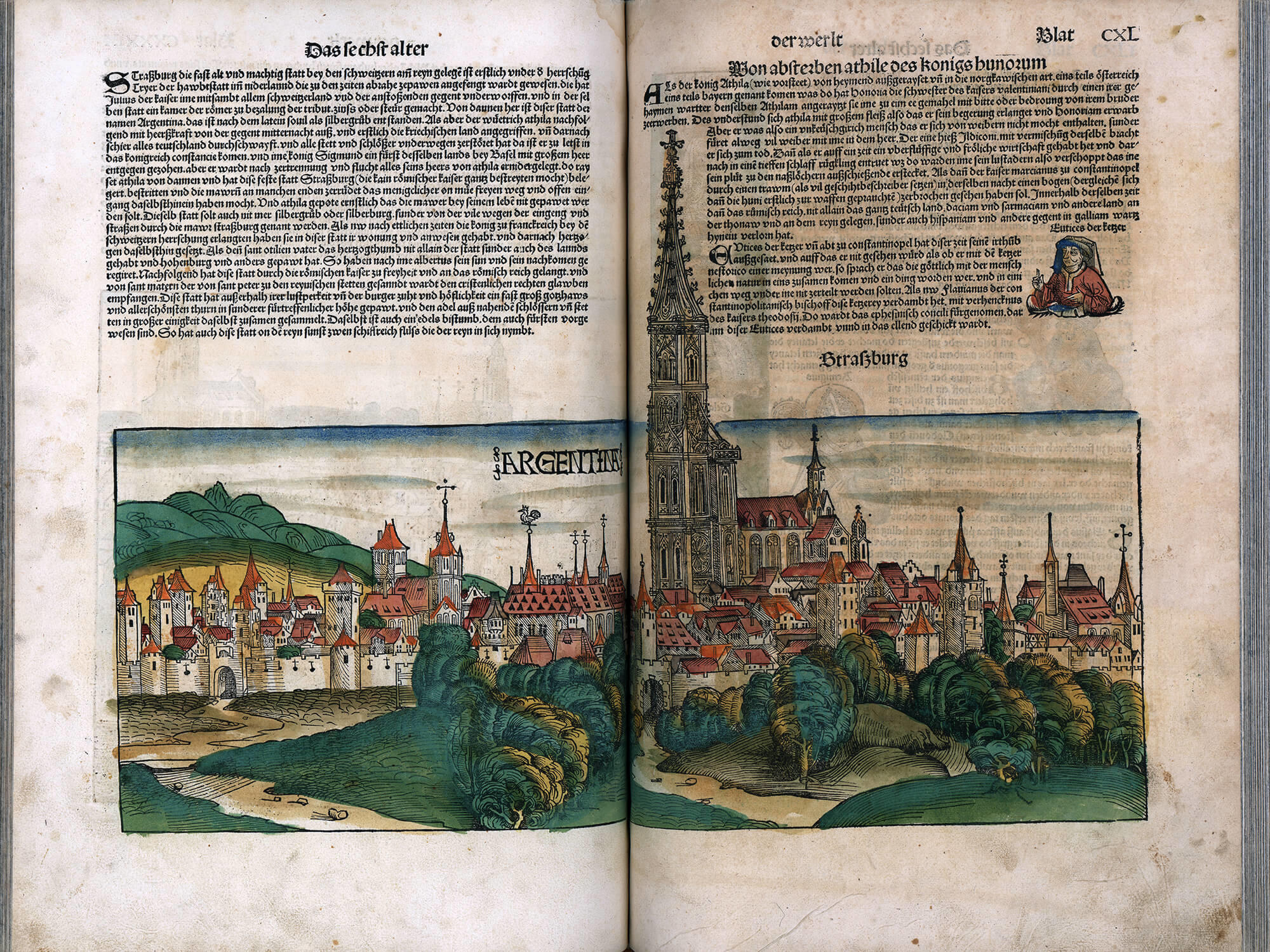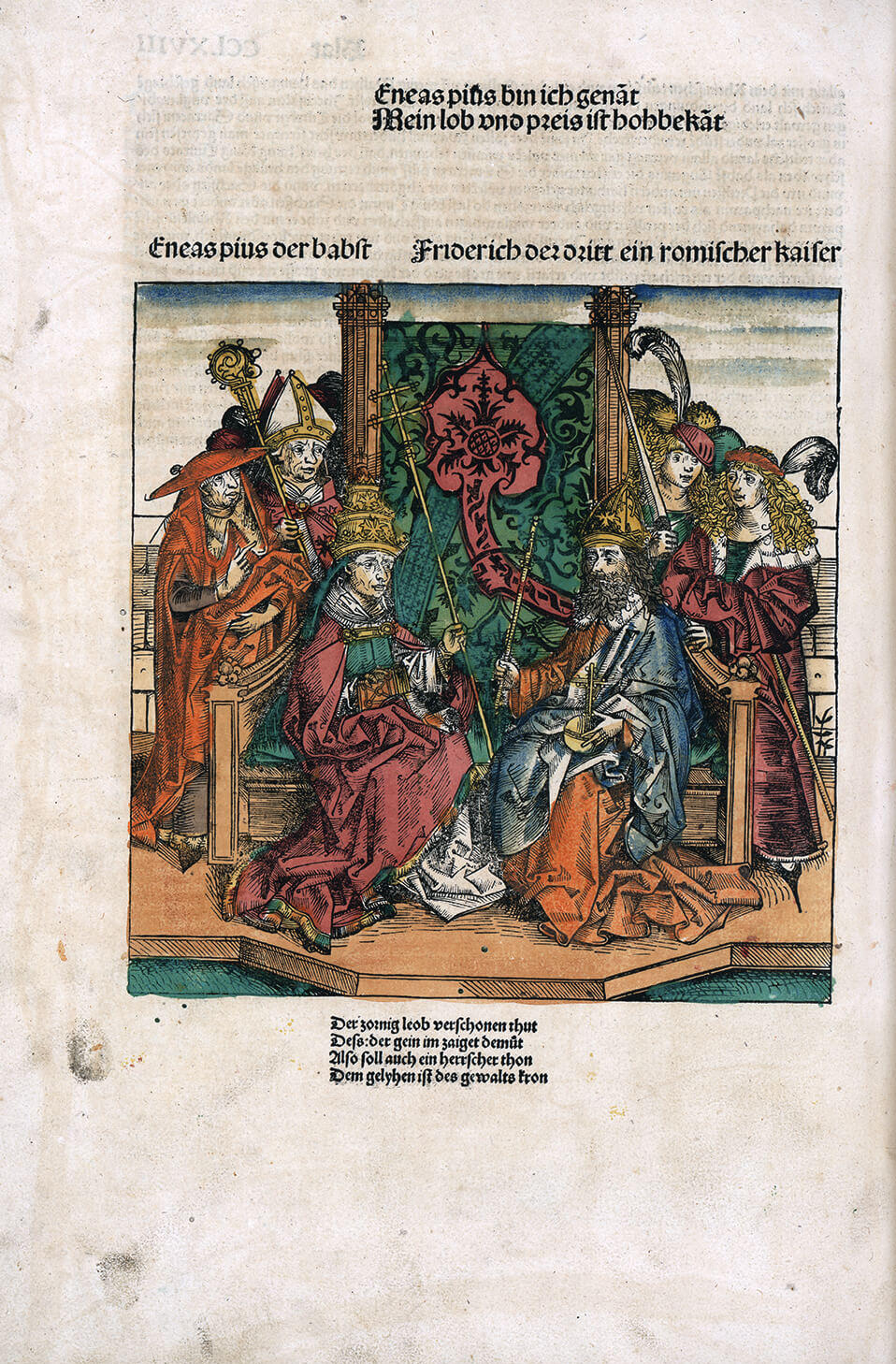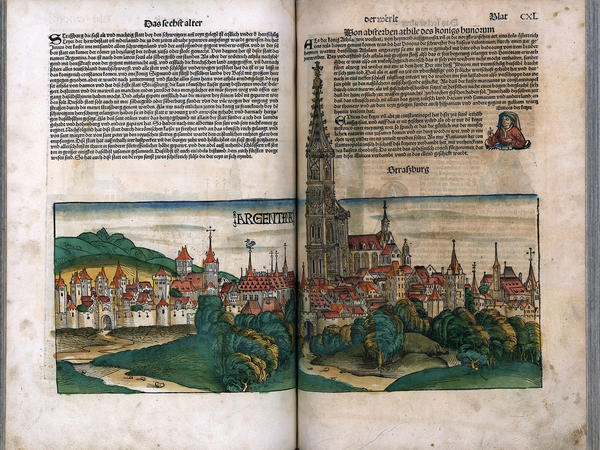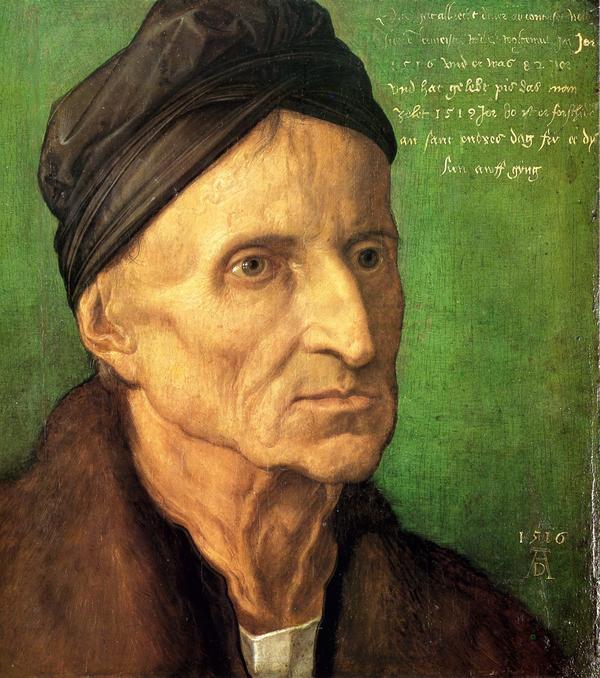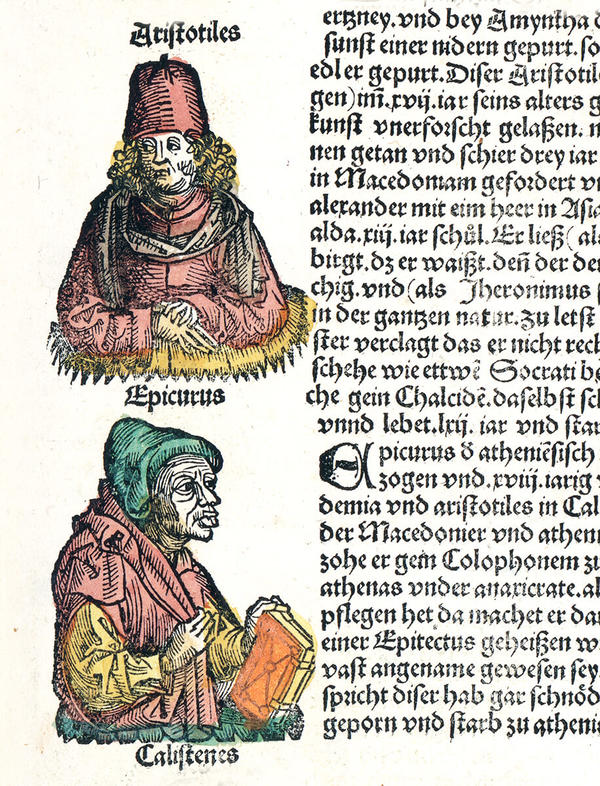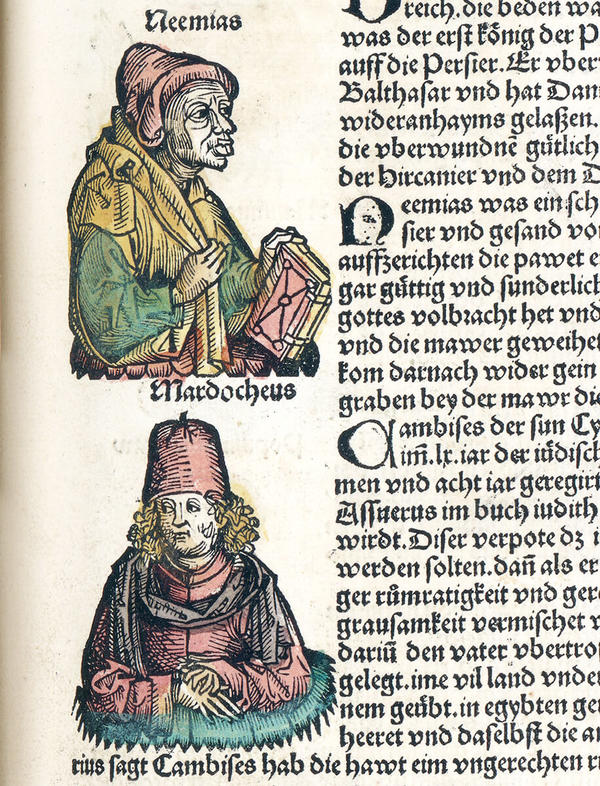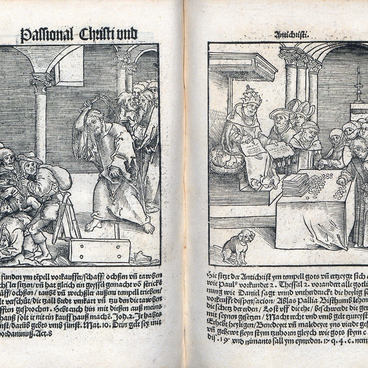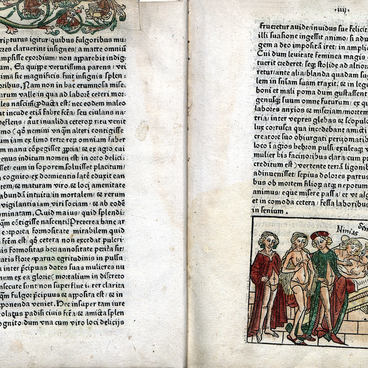The huge folio of World History, written by the Nuremberg doctor and humanist Hartmann Schedel, was issued by the printing house of Anton Koberger, who reigned in the publishing business of the 15th century Nuremberg. A Latin edition was published on July 12, 1493, and a German translation appeared in December of the same year.
1 / 7
#1
Hartmann Schedel
World History
#2
#4
Built on the principle of World Chronicles, which began their narrative from the creation of the world to the present day and divided the whole history into seven ‘ages of the world’, the Schedel’s work is notable for its wide coverage of material and references to contemporary discoveries. Between the sixth age, our time, and the seventh, the Last Judgment, there were a few blank pages left, so that the owners themselves could record the most important events. The last event mentioned in the chronicle — the crowning of the German poet Conrad Celtes with a laurel wreath in Rome — had happened a month before the publication. If the publication had been delayed for a few months, the latest event of the chronicle could have been the news of the journey of Christopher Columbus. The book has a part with a detailed description of Germany and a map of the world.
#5
The Schedel’s Chronicle is the most richly illustrated book of the 15th century. Anton Koberger wanted to create a splendid book for both the educated elite and the public at large. It is decorated with about two thousand scenes displaying views of cities, portraits of historical figures, episodes from the life of saints, astronomical phenomena, real and legendary events. The engravings were created in the workshop of Nuremberg artists Michael Wolgemut — a teacher of Albrecht Dürer — and Wilhelm Pleydenwurff. Their names were mentioned in the colophon, which emphasized the new role of artists in creation of book illustrations that had previously been anonymous.
#6
Albrecht Dürer. Portrait of Michael Wolgemut. 1517
#7
For 1809 illustrations, 645 woodcuts were enough: the same clichés were used for different images. For portraits of 224 kings, 44 boards were used, and for the entire papacy, which at that time numbered 198 successors of the Apostle Peter, 28 images were sufficient. Many areas and most of the monasteries were often replicated in the same way. Only the cities familiar to the publisher — Nuremberg, Cologne and Strasbourg — were an exception.
#10
#9
There is a unique document — the contract of the publisher with the artists — from which we learn that the duties of illustrators, in addition to making engravings, also included laying out of book pages. The book’s look was carefully elaborated: the same image can never be found on one spread, all book page elements — fonts, initials, ornaments, illustrations placement — are in harmony.
The book’s publication took two years, and it appeared in two and a half thousand copies. The grand publication was a declaration of German identity.
The Schedel’s Chronicle was one of the most expensive and valued books of the 15th century, as evidenced by the number of surviving copies: more than one thousand two hundred.
The book’s publication took two years, and it appeared in two and a half thousand copies. The grand publication was a declaration of German identity.
The Schedel’s Chronicle was one of the most expensive and valued books of the 15th century, as evidenced by the number of surviving copies: more than one thousand two hundred.
read morehide
5
Open in app
Share
